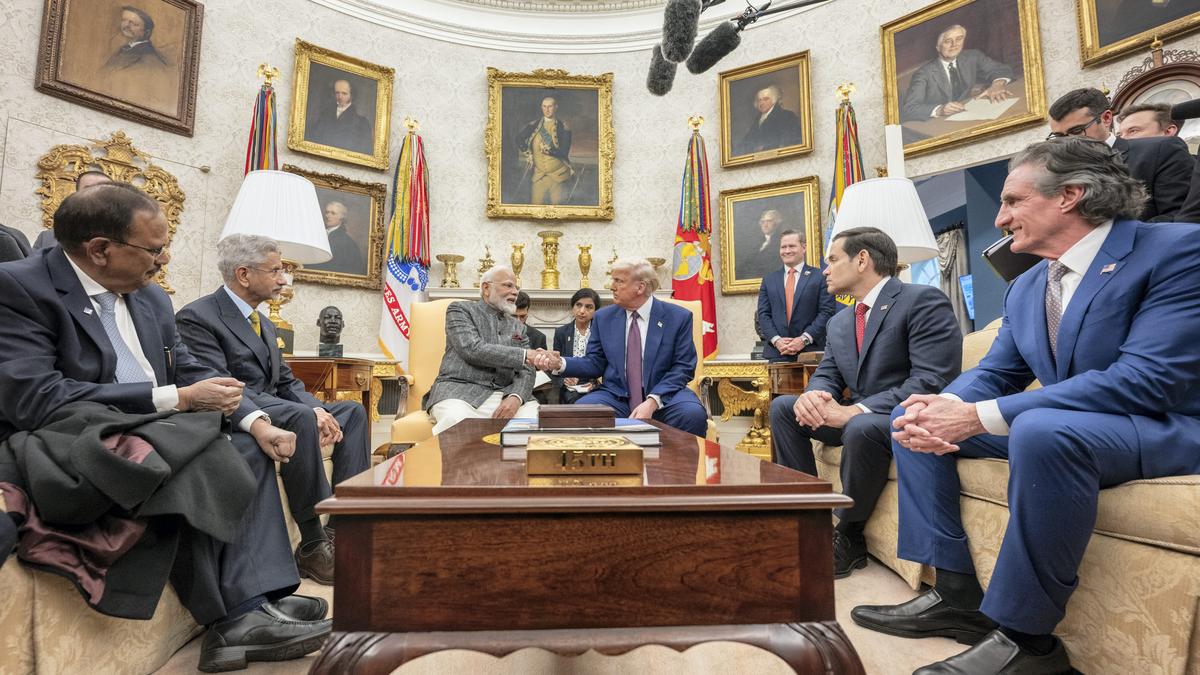Prime Minister Narendra Modi’s brief and official working visit to the United States last week was significant in many ways, reiterating the strong bonds between the two nations and igniting a new momentum in the economic relationship. The visit was replete with productive outcomes for industry of both sides, with major announcements across trade, defence, technology and energy.
From the perspective of Indian industry, the initiatives announced are likely to help India itself integrate more deeply into global supply chains, boost its technology and innovation attainments, and drive its participation in the defence industrial sector.
Towards a trade push
First, it is a pivotal decision that there was an initiation of the first phase of a Bilateral Trade Agreement (BTA) to reduce trade barriers and streamline regulatory processes. Such an agreement would encourage United States companies to invest in India which would include the purposes of plugging India into their supply chains. The $500 billion trade target by 2030 is ambitious but possible, potentially with sectoral sub-targets and easier cross-border procedures.
Several measures have already been taken to address tariffs on both sides. The mention of exporting industrial goods from the U.S. to India and labour-intensive products from India to the U.S. as well as agricultural products highlights that exports from both sides would be encouraged. This is supported by the intention to encourage greenfield investments, including by Indian companies in the U.S.
The Confederation of Indian Industry (CII) had endorsed this target in its report in 2020, and believes that sectors such as IT, pharma, garments and textiles, among several others, would gain from the joint commitment to Mission 500.
While the U.S. market is already relatively open to Indian exports, a well-structured BTA would be mutually beneficial, particularly if it facilitates greater U.S. investment and technology transfers to India.
A technology, defence and energy focus
Second, the U.S.-India Transforming the Relationship Utilizing Strategic Technology (TRUST) underscores the deepening strategic and technological partnership between the two nations and opens further avenues for private sector cooperation with their governments and academia. With a range of sectors identified such as defence, artificial intelligence (AI), semiconductors, quantum computing, biotechnology, energy, and space, TRUST will help foster closer innovation and technology partnerships with U.S. tech giants. Additionally, the INDUS Innovation initiative aims to accelerate research and development in cutting-edge sectors.
India is emerging as a key player in the AI economy and the U.S.-India Roadmap on AI Infrastructure is expected to attract investments in data centres, computing power and AI models. This initiative could enhance funding opportunities for Indian startups in AI and encourage significant investments in areas such as fintech, healthtech, agritech and other developmental solutions, not just for India but also for the Global South.
Third, defence sector initiatives reinforce the India-U.S. strategic partnership through expanded technology transfers, joint production, and industrial collaboration. The launch of a 10-year Framework for the U.S.-India Major Defense Partnership this year signifies a transformative shift in bilateral defence ties. Agreements were reached for the co-production of various systems which can promote indigenous manufacturing, skill development, and economic growth. With a potential for offset clauses, Indian industry can gain hugely from the defence agreements announced during the visit.
Fourth, energy cooperation was another critical area of discussion, with a focus on establishing long-term strategic linkages as India seeks to diversify its energy sources. The leaders underscored the importance of increasing hydrocarbon production to enhance global energy stability and affordability. India’s Union Budget 2025-26 commits to collaborating with the private sector on the development of small modular reactors (SMRs), wherein U.S. companies will play a vital role in advancing this capability. Given India’s ambitious net-zero targets, the U.S., with its vast natural gas reserves, can serve as a reliable energy supplier, strengthening India’s energy security.
Fifth, the two countries have pledged to further the India-Middle East-Europe Economic Corridor (IMEC) through joint infrastructure projects. With both countries entering into plurilateral arrangements in these regions, infrastructure creation could be fast-tracked, with possible spin-offs for the participation of Indian industry in railways, roadways, smart cities and industrial zones. The mention of undersea cables connecting India and the U.S. would give impetus to India’s digital economy and services exports as well.
Links in higher education
Sixth, on education, the leaders decided to boost higher education institutional cooperation, which includes setting up of campuses by leading U.S. educational institutions in India. This would bring comfort to Indian students. Legal mobility is expected to be streamlined as well.
Indian industry is committed to working with both governments to maintain this momentum, advocating pro-business policies and ensuring industry feedback in implementation. With collaborative spirit and sustained reform, the benefits of this visit can be fully realised, positioning India’s economy on a high-growth trajectory. In sum, Mr. Modi’s U.S. visit, viewed through industry’s business lens, is more than a diplomatic success. It is a blueprint for India to leverage global partnerships in becoming an economic powerhouse, innovating and prospering in tandem with its strategic ally.
Chandrajit Banerjee is Director General, Confederation of Indian Industry
Published – February 22, 2025 12:08 am IST

